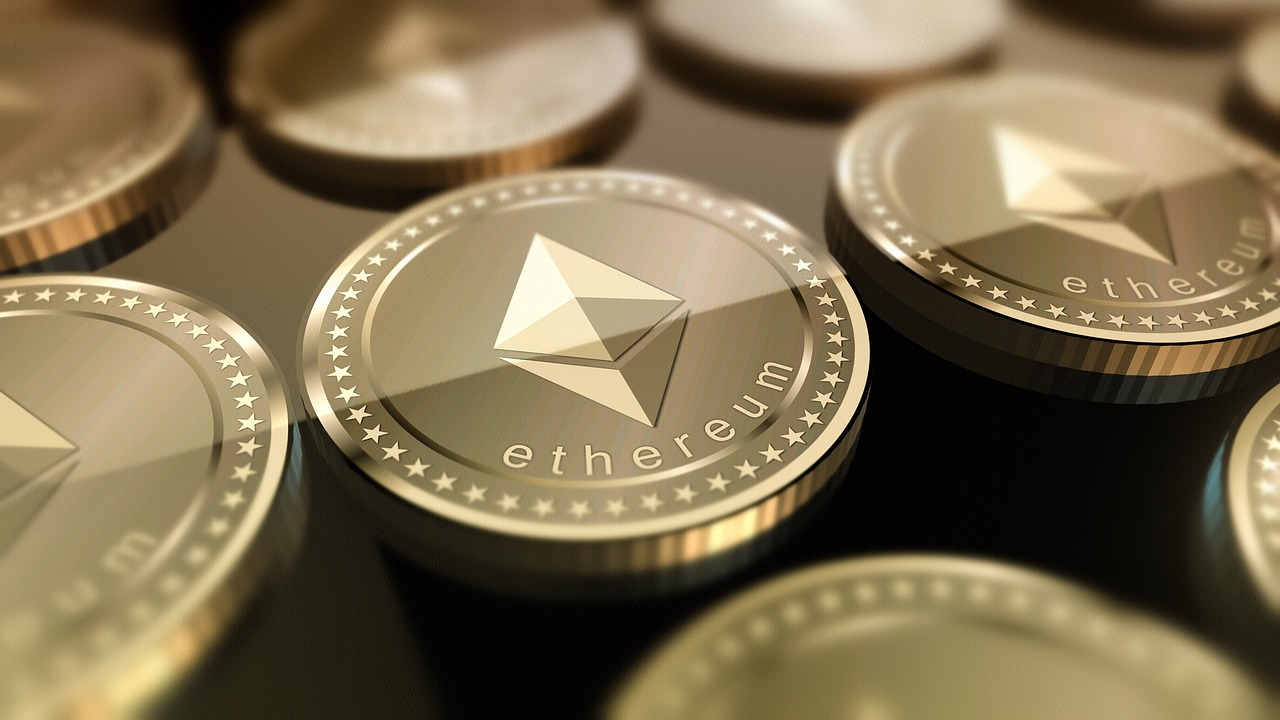In this article we will discuss Ethereum. Let us begin by explaining: What is Ethereum? Ethereum is a decentralized application platform. It uses smart contracts and proof of work to secure its blockchain. This makes it unhackable. Its main use case is in the decentralized world of digital currencies. Learn more about this cryptocurrency in our article. We’ll also talk about how it differs from Bitcoin. (Also Read: Which Blockchain Networks Are Right for Your Business?)
What is Ethereum?

Ethereum is a decentralized application platform.
Ethereum is a decentralized application platform based on blockchain technology. This technology allows developers to build decentralized applications without the use of third-party services. This means that developers can build anything, from trading apps to codifying anything. In the future, Ethereum could be used to trade, secure, and codify almost anything.
The internal programming language of Ethereum makes this technology possible. Its predecessors were limited to serving static pages. HTML, on the other hand, added the feature of forms. The result was like colored coins on web protocols. Javascript is another programming language inside the web browser, which makes it possible to build applications.
Ethereum uses a distributed, open-source platform that can be used to create decentralized applications. It enables the development of smart contracts, which are computer programs that execute specific actions when certain events in the physical world occur. These contracts can be financial, legal, or even automate flows of value. Smart contracts are different from traditional contracts in that they don’t need a central authority and can’t be censored.
There are several tools available to help developers create decentralized applications. Developers can use Solidity, Serpent, or Truffle. The latter is the easiest to learn and is similar to JavaScript.
It uses smart contracts.
Smart contracts are the technology that enables Ethereum to enable value exchange. In addition to using Ethereum’s digital currency, Ether, smart contracts can be used to exchange content, property, and even shares of ownership. They run on blockchain technology and are thus safe from downtime, fraud, and third-party interference. They also can’t be changed, which means that everyone involved in the deal has to follow the rules of the contract.
Ethereum’s smart contracts are written in the Solidity programming language, a language similar to Javascript and C++. They run on the Ethereum blockchain and are executed by the Ethereum Virtual Machine (EVM), a distributed supercomputer. Smart contracts can be simple or complex, but they are not easily modified or upgraded.
Smart contracts allow Ethereum users to conduct complex transactions without the need for a third party. They can automate money transfers, validate data, and calculate fees and sums. As such, smart contracts can help to reduce the cost of complex exchanges and make transactions easier and more efficient. In addition, smart contracts can be replicated across many nodes of the network.
The Ethereum-based blockchain stores data in “Accounts.” Each account has a specific location on the blockchain. This location is called the account’s address, and it is represented by a hexadecimal number. STRATO accounts are different from Ethereum addresses because STRATO accounts are uniquely represented by a chain ID. This makes it easier to find the location of an account.
It uses Proof of Work to secure its blockchain.
The technology used by Ethereum to secure its blockchain is known as Proof of Work. It is a proven way to keep a decentralized blockchain secure. It works because miners are incentivized to participate in the network as its value rises. As the number of miners increases, so does their processing power, and this increases the security of the network. As a result, no single individual can interfere with the blockchain.
Proof of Work was first introduced by Bitcoin and is the main technology behind Ethereum’s network security. This technology involves the use of mining rigs to secure the blockchain by solving cryptographic math problems. Miners get ether for making sure the network is safe, and nodes get ether for how much computing power they have.
Proof of Work is a security technique used to prevent double-spending. Double-spending is a serious problem when it comes to online transactions. While copying files or sending emails is trivial, it is not impossible to duplicate the digital money you spend. Proof of Work stops people from spending the same money twice because it requires a computer to do a lot of calculations.
Proof of work was introduced in Bitcoin and quickly spread among cryptocurrencies. However, its downside is that it requires a large number of machines to secure the network. Miners must have more than 50% of the computing power on the network to successfully complete their tasks. Proof of stake is a more efficient method, which requires less energy than proof of work.
It is unhackable.
Ethereum is a popular cryptocurrency, and its developer community recently paid an auditing firm to audit the security of the blockchain. The company found many security vulnerabilities, including one that allowed users to deploy a smart contract that could result in millions of dollars being stolen. The DAO hack, which caused a $55 million loss, was a result of this bug. This vulnerability was fixed, and the DAO subsequently split into Ethereum Classic and Ethereum.
Some smart contracts are prone to attacks, and some cannot be patched. However, developers have built centralized kill switches that will automatically stop activity if a cyber attack is detected. Unfortunately, these kill switches can only prevent the hacker from getting hold of a user’s funds. As a result, a hacker who steals your funds may never get them back. To avoid this, developers of Ethereum have been developing a new blockchain to fix this problem.
Hackers also target people who use Discord. These scammers search for public discord channels and send private messages to targets. They then build trust with the victims to trick them into sending funds into their wallets. They also use phishing scams to steal funds. This attack may be unrelated to Ethereum, but it shows the risk of phishing attacks.
While Bitcoin and Ethereum are unhackable, other crypto platforms are vulnerable to hackers. A common attack vector is known as a “51% attack,” where a group of malicious actors gains control of 50 percent of the total mining hash rate. While many people think that blockchains are unhackable, the reality is that human ingenuity often overcomes these limitations.
It uses gas to perform operations.
Gas is a key metric in Ethereum and it is used to measure the cost of completing operations. Gas is not a token, but rather it exists inside the Ethereum Virtual Machine as a count. The gas is used to measure the amount of work that must be completed and it is also used to reward miners within the system.
To operate on the Ethereum network, a user must pay a fee known as gas. The amount of gas required for a particular operation varies, and the more complex the operation, the more gas is required. For example, a storage operation will require around 200 to 20,000 gallons of gas, while a stack operation will require two to three gallons.
The price of gas for Ethereum transactions depends on demand and supply. In times of high network traffic, the price of gas may increase. This is because more transactions will be competing to be included in the next block, which will increase the gas price. However, there is also a concept known as the “gas limit.”
The price of gas affects the performance of the Ethereum network. It is used by miners to process transactions. When a transaction requires more gas than the transaction owner has, the extra amount will be returned to the owner. The high price of gas makes it expensive for miners to perform their work, which means they must spend a lot of money.
It is programmable.
The blockchain technology that Ethereum is based on is programmable, which makes it a good fit for decentralized applications. It uses a programming language called Solidity, which is similar to JavaScript. This language is adapted to work on a blockchain network and uses a state transition model to provide programmability. In the UTXO model, you have to check the history of transactions. This isn’t necessary in the state transition model.
The Ethereum platform enables a wide range of digital assets and enables users to create and transfer value using smart contracts. This means that people can create apps, games, and financial services without any third-party involvement. Ethereum is similar to Bitcoin but is a more general-purpose platform. Bitcoin was the first thing to use blockchain technology. Ethereum is a platform that can be programmed and lets users make and change their own digital assets.
Ethereum is still in the early stages of development and will continue to be developed over time. It has been used to create stablecoins, a novel type of cryptocurrency that is linked to the United States dollar. This allows for a cheap, global payment system. A majority of current stablecoins are built on the Ethereum network.
Ethereum is currently undergoing a major change. Its blockchain architecture is moving to Proof of Stake, which will remove proof of work mining. While the functionality will remain the same, the new system will be able to process larger numbers of transactions. This will also allow for greater scalability and centralization. (Also Read: Learn How to Sell Cryptocurrency Quickly)












